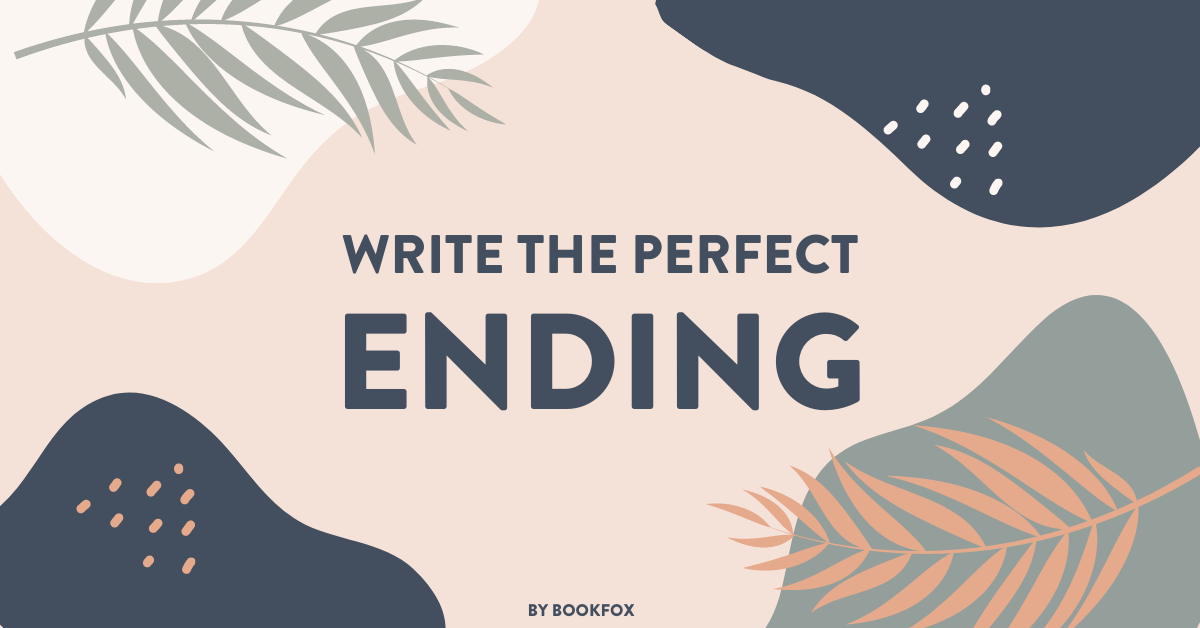Table of Contents
ToggleIntroduction
How To Find The Perfect Ending For Your Story Creating the ideal conclusion is one of the most difficult yet gratifying parts of storytelling. The conclusion of any tale, be it a novel, short story, screenplay, or something else entirely, is frequently what readers remember the most.
It’s their final impression of your work and has the power to enhance your entire narrative, making it memorable, significant, or even thought-provoking. A compelling conclusion might offer closure, arouse feelings, or give the viewer something to think about long after the last page is turned.
However, how can you come up with the ideal conclusion for your tale? There isn’t a single, universal solution. The kind of tale you’re telling, the issues you wish to explore, and the emotional impact you want to achieve will all influence the ideal ending. The ending must fit the arc of your novel and appeal to your readers, whether you’re going for a satisfactory climax, a surprising turn, or an open-ended finale.
1. Understand the Purpose of Your Ending
Before you begin brainstorming or writing your ending, it’s essential to understand its purpose within the context of your story. The ending isn’t just a random conclusion tacked onto your plot; it should serve a significant role. The perfect ending should tie back to the main themes, arcs, and conflicts you’ve set up throughout the story. Here are the key functions your ending must fulfill:
1.1. Providing Closure
One of the primary functions of an ending is to provide closure. A well-written ending resolves the central conflict of the story, answering the questions raised throughout the narrative. This doesn’t necessarily mean everything must be neatly wrapped up, but the resolution should feel satisfying and aligned with the story’s trajectory.
1.2. Echoing the Theme
The ending is the ultimate place to reinforce the themes and messages of your story. If your novel explored the theme of redemption, for instance, your ending should reflect that by showing the protagonist’s growth or moral victory. The ending should tie back to the emotional core of your story.
1.3. Emotional Impact
A good ending evokes emotion. Whether it’s joy, sadness, fear, or relief, the conclusion of your story should leave the reader feeling something significant. This emotional impact is what makes an ending memorable.
1.4. Leaving an Impression
The perfect ending doesn’t just wrap up the plot; it lingers. A great ending makes the reader reflect on the journey they’ve just experienced. It can provide insight, challenge expectations, or even leave them pondering the fate of the characters long after the book is closed.

2. Consider Your Genre
The genre of your story heavily influences the type of ending that will work best. While certain elements are universal, different genres often have their own conventions and expectations when it comes to endings. Understanding these expectations will help guide you toward an appropriate conclusion.
2.1. Happy Endings in Romance and Comedies
In romance or comedic stories, the reader generally expects a satisfying resolution, often with the protagonist finding love, happiness, or success. However, this doesn’t mean you should resort to clichés or formulas. Even in these genres, a strong, heartfelt conclusion should feel earned, not contrived.
2.2. Tragic Endings in Drama and Literary Fiction
In drama or literary fiction, tragic endings can be particularly effective. These endings often emphasize the complexities of life and the human condition, leaving the reader with a sense of bittersweet closure. However, even with tragedy, the ending should still feel inevitable, stemming from the characters’ actions, desires, or flaws.
2.3. Twist Endings in Thrillers and Mystery
In thrillers or mysteries, a well-executed plot twist at the end can offer the shock and surprise that the genre demands. But a twist must be both surprising and believable. It shouldn’t feel contrived or out of nowhere, as it would diminish the impact of the story.
2.4. Ambiguous Endings in Fantasy and Science Fiction
For fantasy or science fiction stories, an open-ended or ambiguous conclusion can be effective, especially if the story explores complex world-building, philosophical ideas, or concepts that can’t be easily resolved. In these cases, the reader may prefer an ending that leaves questions unanswered, allowing the story to exist in the imagination.
Read more
3. Types of Endings
There is no one way to end a story. Here are some popular types of endings you can consider, depending on your story’s direction and tone:
3.1. The Happy Ending
The “happy ending” is often associated with fairy tales, romance, and lighthearted genres. It involves resolving the conflict in a way that leaves the protagonist (and possibly other characters) in a state of happiness or fulfillment. While this can feel satisfying, a happy ending should still be earned. If it feels forced, it may leave the reader disappointed.
3.2. The Tragic Ending
The tragic ending is often used in dramas, literary fiction, and certain genres where the story is meant to explore the harsh realities of life. A tragic ending can be emotionally resonant and profound, but it must feel true to the story. It often involves the protagonist’s downfall, death, or unfulfilled desires.
3.3. The Twist Ending
A twist ending is designed to surprise the reader, offering a shocking or unexpected conclusion. It’s commonly used in thrillers, mysteries, and suspenseful genres. However, for a twist to be effective, it must be foreshadowed subtly throughout the story. A sudden twist that feels out of place can frustrate readers and undermine the narrative.
3.4. The Open Ending
An open-ended conclusion leaves some aspects of the story unresolved. This type of ending can be powerful if it encourages the reader to think about the possibilities and meanings behind the events. Open endings are often used in literary fiction, fantasy, and science fiction, allowing readers to interpret the outcome in their own way.
3.5. The Circular Ending
A circular ending takes the story full circle, often revisiting an image, location, or theme from the opening of the story. This ending can offer a sense of symmetry, showing how far the characters have come or how little has changed. It’s often used in stories that explore cyclical themes or the inevitability of certain outcomes.
3.6. The “Unresolved” Ending
This type of ending is intentionally left vague or unresolved, offering little to no closure. This can be effective in stories that aim to explore deeper philosophical or existential questions, where providing answers would feel superficial. It can leave the reader with a sense of discomfort or contemplation.
4. Match Your Ending to Your Theme
The ending of your story should resonate with its theme. This means considering what your story is about, not just in terms of plot but in terms of the emotions and messages it conveys. A story that explores themes of redemption, for example, might end with the protagonist’s transformation, whereas a story about the futility of war might end with a tragic or unresolved note.
How to Align Ending and Theme:
- Identify Your Story’s Core Message: What is the central message you want to convey? What do you want the reader to take away from the story? Your ending should reflect that.
- Be True to Your Characters: Consider how your characters’ journeys align with the themes. Their growth (or lack thereof) should lead them toward an ending that feels earned and fitting.
- Avoid Contradicting the Theme: If your story is about the dangers of greed, a sudden happy ending where everyone becomes rich may feel jarring and inauthentic. Stay true to the themes of your narrative.
5. Crafting a Satisfying Conclusion
A satisfying ending is one that feels earned, true to the story, and emotionally impactful. Here are a few ways to ensure your conclusion satisfies readers:
5.1. Resolve the Central Conflict
The main conflict in your story should be addressed by the end, even if not every minor plot point is wrapped up. The protagonist’s journey should feel complete, whether that means achieving their goal, coming to a personal realization, or confronting the antagonist.
5.2. Tie Up Loose Ends
While not every subplot or character arc needs a definitive resolution, most readers expect some level of closure. Consider which plot threads need to be resolved and which can remain open. If you leave too many loose ends, your ending may feel unsatisfying.
5.3. Create Emotional Resonance
A strong ending will evoke an emotional response from your reader. Whether it’s joy, sadness, triumph, or despair, the ending should resonate emotionally and leave the reader thinking long after they’ve finished reading.
5.4. Avoid Rushed Conclusions
Don’t rush your ending. If it feels abrupt or too neatly tied up, readers may feel like the story didn’t get the attention it deserved. Take your time with the resolution, and ensure it feels earned.
Read more
6. Avoid Common Ending Mistakes
When crafting your story’s ending, be mindful of common mistakes that can undermine its impact:
6.1. Forced Happiness
If your ending feels overly optimistic or contrived, it can come across as unrealistic. Don’t sacrifice the integrity of your story just to give your protagonist a happy ending.
6.2. Inconsistent Tone
Ensure that the tone of your ending matches the rest of the story. If your story has been dark or suspenseful, a sudden, light-hearted conclusion can feel out of place. Conversely, if your story has been lighthearted, a sudden tragedy may feel jarring.
6.3. Lack of Development
An ending where nothing changes or the characters don’t grow can feel unsatisfying. Your characters should evolve over the course of the story, and that evolution should be reflected in the ending.
6.4. Overused Tropes
While classic endings (like the love interest finally getting together) can be effective, avoid relying too heavily on clichés. Your ending should feel fresh and original, even if it follows familiar patterns.

Conclusion
Finding the perfect ending for your story is a balancing act. It requires you to consider the emotional resonance, thematic implications, and overall tone of your narrative. By understanding the purpose of your ending, considering your genre, and ensuring it aligns with your characters’ journeys, you can craft a conclusion that feels true to the story and leaves a lasting impact on your readers. Whether it’s a happy ending, a tragic conclusion, or something in between, the key is to make sure your ending is earned and resonates with the heart of your story. Happy writing!
Read more
FAQ
1. How do I know when my story is finished?
Your story is finished when the central conflict is resolved, the themes have been explored, and the emotional arc of your characters feels complete. Trust your instincts and take time to reflect on whether the ending feels natural and true to the narrative.
2. Can I write multiple endings before choosing one?
Absolutely! Many writers try out different endings before settling on the one that feels right. Don’t hesitate to experiment, as this can help you understand what works best for your story.
3. Is it okay to leave questions unanswered?
Yes, if it serves your story. Open endings can be powerful, but make sure they align with the narrative’s tone and themes. Readers should feel like they’re still getting something out of the ending, even if it’s not definitive.
4. Should I aim for a twist ending?
Twists can be effective if done well, but they should be earned. Don’t force a twist just for the sake of surprise; it should feel organic to the story.
5. How do I avoid an ending that feels predictable?
To avoid predictability, focus on creating characters and plots that are layered and multifaceted. Avoid too much foreshadowing of the ending, and allow room for surprises or subtle complexities.
















